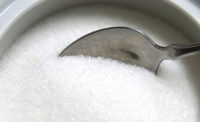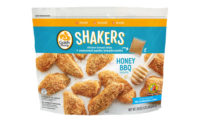As technology evolves, there are times when changes are incremental and times when step changes occur in a way that massively disrupts the status quo. Digital sorting has recently experienced such a step change.
From the sorter’s mechanical architecture to its sensors, software, ejection system, user interface and more, major changes in technology present benefits to processors of refrigerated and frozen fruits and vegetables, leafy greens, potato strips, seafood and more. What’s new is how today’s advanced digital sorters are doing more to satisfy these objectives.
All-sided surface inspection
The problem with legacy belt-fed sorters is that bottom-mounted sensors are located such that they are exposed to splatter and debris contamination. Now, new mechanical architecture on belt-fed sorters positions bottom-mounted sensors, along with light sources and backgrounds, to clear away from product splatter. Full viewing of the product stream is sustained throughout even the longest production cycles. Blind spots are eliminated and 100% surface inspection is maintained accurately after days and weeks of continuous operation. When the application warrants, modern chute-fed sorters can now be configured with laser scanners and cameras mounted on the front and back of the product stream.
FM and defect discrimination
A step change incorporates new multi-sensor pixel fusion, a detection technique that uniquely combines pixel-level input from multiple cameras and laser sensors for the greatest detection accuracy possible. This multi-spectral level of analysis allows sorters to detect and remove the most difficult FM and surface defects with fewer false rejects. Pixel fusion also enables sorters to uniquely identify specific FM types and automatically alert when a particular FM finding occurs during production.
Accurate ejection
Intelligent software adjusts the power, pattern and duration of air nozzles to suit the size, shape and weight of each object targeted for separation. Smart sorters actuate one or more nozzles using contour- or centroid-based calculations to target precise “hit points” on the object, maximizing removal accuracy and preventing the targeted item from disturbing the path of other objects around it.
Ease of use
Digital sorters are also becoming more sophisticated in their ability to detect and separate FM and product defects thanks to their increased processing power. New automation intelligence helps maintain peak performance and allows sorters to run virtually unattended during normal production.
New automation intelligence helps maintain peak performance and allows sorters to run virtually unattended during normal production. Auto-learning functions allow sorters to automatically process trend variations in incoming product quality and determine if sort recipe adjustments are necessary. Then, self-adjust algorithms enable sorters to automatically adapt to normal changes in the product or operating environment. Predictive system diagnostics alert users to critical system components before it has an opportunity to fail, maximizing machine uptime. Advanced sorters can also be programmed to send smart alarms to remote devices if certain conditions of interest begin trending in problematic directions. Recipe-driven operation and repeatable system calibration ensure consistent sorting performance day after day, including when running the same sort recipe across multiple sorters in different lines or plant locations.
Big Data
Modern digital sorters can be leveraged to collect, analyze and share information across the processor’s enterprise. Called “information analytics,” this customized capability enables sorters to collect real-time data and generate reports about the sort process and every object flowing through the sorter. By turning data into knowledge, it facilitates the processor making more informed decisions about line functions upstream and downstream of the sorter.
Today’s most sophisticated sorters feature software that enables universal connectivity via an OPC-compliant infrastructure, supporting integration with factory automation system such as MES or SCADA from various manufacturers. Additional integration scenarios include support for Modbus and Ethernet/IP devices or the creation of CSV and database files for off-line analysis.
For food processors looking to enhance product quality, increase yield, reduce training and improve operational efficiencies, today’s newest digital sorting equipment is worth considering.


